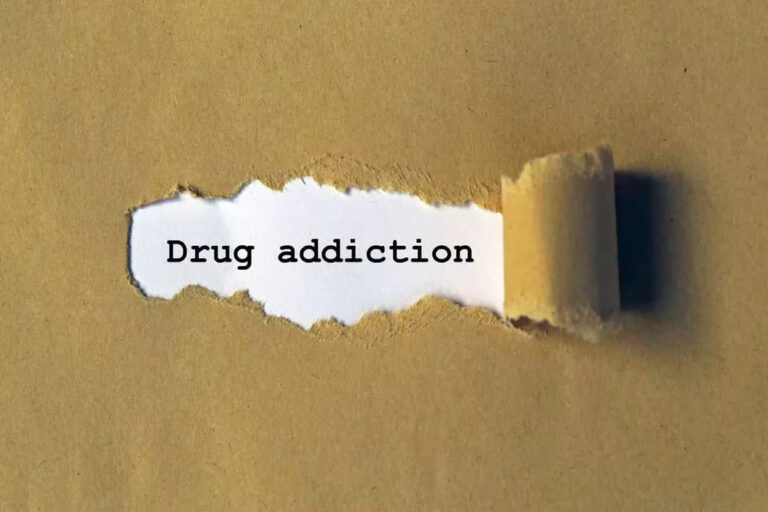Contents
Recovering addicts who can develop a deep bond with their therapist usually obtain the best results. This treatment is highly interactive and is conducted over numerous sessions, typically over a long time. One of the key features of the psychodynamic model is to study the conflict between the conscious and unconscious mind.
What is the difference between Durkheim and Weber?
Weber, inspired by the German intellectual position, emphasized meaning and the interpretation of individual action in his studies. Durkheim, on the other hand, represented the French intellectual orientation in sociological theory and proposed ideas like collective consciousness and social collectivity.
These representations guide behaviors, attitudes, and expectations, and emerge during the first mother-infant interactions (Huth-Bocks, Muzik, Beeghly, Earls, & Stacks, 2014; Suchman, McMahon, Zhang, Mayes, & Luthar, 2006). It is instructive to note that many individuals experiment with drugs but few become addicted. The success of therapy and the lasting change require the patients come into contact with previously inaccessible aspects purpose and structure of oxford house of their inner feelings. Helping patients increase the ability to engage in self-reflection and identify alternative ways to manage difficult emotions are part of the psychodynamic approach to addiction treatment. For instance, individuals with histories of exposure to adverse childhood environments (e.g., physical and sexual abuse) tend to have a diminished capacity to regulate negative emotions and cope effectively with stress.
Addiction Essential Reads
Echoing psychodynamic object relations theories, secure attachment bonds have been suggested to protect an individual from developing an addiction . For instance, sensitive parenting has been found to promote the development of the executive functioning skills and self-regulation (Berner et al., 2010). It has been argued that growing up in a nurturing environment samhsas national helpline could promote a more effective distress regulation system and a greater ability to refrain from overindulging in recreational drugs (Fonagy et al., 2004). Importantly, not all insecurely attached children develop an addiction later in life (Schindler & Bröning, 2015). Converging research suggests that addiction and attachment have overlapping neural pathways.
What are the 2 goals of sociology?
Sociology Objectives
To teach students the concepts, theories, and methods of the behavioral and social services. 2. To introduce students to the basic social processes of society, social institutions and patterns of social behavior.
The biopsychosocial model of the addictions advocates for a variety of treatment which impacts on addictive behavior. Despite this, anyone who has worked clinically with addicts often has a feeling that these focused approaches, appear inadequate in addressing and understanding clients’ emotions and sufferings, even though addiction often occurs within the context of distressed feelings. First, from an ego-psychology perspective, addiction is more likely in individuals with underdeveloped executive functioning or ego-functions, primarily reality testing, stimulus barrier, judgement, impulse control, and the synthetic-integrative function (Bellak, Hurvich, & Gedeman, 1973).
Psychodynamic therapy and its effectiveness with other treatment approaches
It assumes that all behavior expressed in adult life has a cause or reason behind it, typically originating from childhood experiences. Thoughts, feelings and behaviors are intertwined in active substance use, so all of these aspects need to be addressed during treatment in order to achieve long-term recovery. Based on the interactions between the substance and the brain’s reward system, repeated substance use can create a psychological dependence, resulting in addiction. For example, for every additional ACE score, there is a correlated 62% increase in the rate of the number of prescription drugs used. Furthermore, a two- to four-fold increase in the likelihood of early initiation into illicit drug use is observed each time an ACE of childhood abuse, neglect, or household dysfunction is introduced. The ultimate aim of each session is to teach the addict a new skill to eliminate the unconscious connections between past experiences and current-day triggers for substance abuse.
What are the 2 branches of sociology?
According to Sorokin, Sociology can be divided into two branches- General Sociology and special sociology. General sociology studies the properties and uniformities common to all social and cultural phenomena in their structural and dynamic aspects.
At this point, it is not uncommon for close friends or family members to distance themselves from the individual struggling with their substance use until eventually, the individual’s entire social network consists of other people who use and/or are addicted to substances. Our writers and reviewers are experienced professionals in medicine, addiction treatment, and healthcare. AddictionResource fact-checks all the information before publishing and uses only credible and trusted sources when citing any medical data. The Verified badge on our articles is a trusted sign of the most comprehensive scientifically-based medical content.
Find Therapy and Psychiatry by Insurance
The neurobiological perspective provides a considerably structured and empirically-based approach, acknowledging that substance use leads to a series of neurochemical reactions in the brain that have structural and functional neuroadaptations. The opponent-process approach (Solomon & Corbit, 1974) suggests that the shift from substance use to substance abuse is generated by the transition from positive to negative reinforcement processes motivating continued substance use. From the perspective of incentive sensitization (Robinson & Berridge, 1993), the shift reflects an associative learning process mediated by a neurobiological sensitization to substance-related cues.

This vulnerability, coupled with a stressful or demanding environment, hinders the proper development of the superego and limits the ego’s ability to develop more mature defense mechanisms for self-regulation (e.g., repression, displacement, sublimation, or humor; Freud, A., 1937). The ego is therefore limited to more primitive defensive strategies, including denial, idealization, and projective identification –defense mechanisms that are commonly reported in patients with addiction (Freud, A., 1937; Kernberg, 1975). Therefore, when such a fragile core-ego is faced with the hedonic demands of the Id, it may give in to the demands, for example, by procuring and consuming psychoactive drugs, or engaging compulsively in gambling, sex, or binge-eating (Freud, S, 1915; Fonagy & Target, 2008). In addiction treatment settings, psychodynamic theory is applied to help guide the individual to examine past experiences that may have factored into the substance use disorder. By openly confronting these experiences — which may be painful, traumatic events from as far back as early childhood — the patient can process and eventually heal from the pain in a guided, therapeutic environment.
Addiction is a psychiatric disorder characterized by a pathological and compulsive pattern of drug-seeking and drug-taking behaviors that occupy an extraordinary amount of an individual’s time and efforts, leading to significant functional impairments to meet the responsibilities of work, school, or home . Data from the 2013 National Survey on Drug Use and Health suggested that 24.6 million Americans aged 12 years or older had consumed a psychoactive drug a month prior to the survey . Persistent use of psychoactive drugs may lead to long-term changes in the brain, leading to the multiple symptoms and features of addictions, including craving, withdrawal, and tolerance (Robbins, Everitt, & Nutt, 2008; Volkow, Wang, Fowler, Tomasi, & Telang, 2011). The disruptive pattern of drug-seeking behaviors persists despite the negative consequences of addiction, with many individuals struggling to reduce or abstain substance use (Johnson, 2013; Robinson & Berridge, 2008).
Neurobiological theories of addiction
Psychodynamic therapy is effective for people with substance abuse issues for many reasons. First, recovering addicts get in touch with unconscious feelings and emotions they are unaware of. The psychodynamic theory states that childhood experiences play a significant role in establishing these unconscious processes in the mind that stick around into adult life. Central to this attachment-based integration of neuroscience and psychoanalysis are the mental representations of attachment or the internal working models of expectations and attributions about the mother, the child, and the dyadic relationship .
- That is because recovering clients learn skills to evaluate their thoughts, look into their minds, and identify the reasons for current behaviors.
- The neurobiological perspective provides a considerably structured and empirically-based approach, acknowledging that substance use leads to a series of neurochemical reactions in the brain that have structural and functional neuroadaptations.
- Psychodynamic therapy—whereby a clinician helps an individual process and heal from their pain, become more aware of their unconscious thoughts, and analyze deep feelings about their past experiences—can be incredibly beneficial when working with a person with a history of trauma.
- These imaginary representations are imbued with real (i.e., conscious) and fantasized (i.e., unconscious) qualities of significant others and relationships.
A strong client-therapist relationship is critical because the procedure is only effective when the client feels comfortable in frankly and honestly sharing deep-seated emotions. The path to recovery involves both client and therapist working together toward a life free from the influence of past conflicts. The goal is to get the addict to a point where they do not feel the need to use alcohol or drugs. By teaching the addict to face underlying emotions, this form of therapy lowers the chances of relapse from addiction recovery.
The psychodynamic model of addiction views substance use through a psychodynamic lens whereby past experiences, thoughts, and circumstances are believed to shape a person’s present behaviors. This particular model is especially helpful when working with clients with a severe or extensive history of traumatic events. Addiction Resource is an educational platform for sharing and disseminating information about addiction and substance abuse recovery centers. Addiction Resource is not a healthcare provider, nor does it claim to offer sound medical advice to anyone.
Psychodynamic therapy can be a useful treatment method to help individuals better understand the emotional issues behind their behaviors. Combining psychodynamic therapy with behavioral therapies like CBT and DBT can provide a comprehensive multi-modal approach for the treatment of substance use disorders. From a neurobiological perspective, addictions are understood as a series of within- and between-system neuroadaptations, which may lead to structural and functional brain changes that impact reward processing, executive functioning, and emotion regulation (Koob & Le Moal, 2008; Potenza, 2008; Volkow et al., 2011). In the case of SUDs, the neurochemical properties of substances may exert differential effects on neurotransmitter systems.
Caron Outpatient Treatment Center
It refers to the process of observing and imitating others, thereby resulting in the acquisition of new behaviors. Rehabs are open and ready to accept new patients and provide them with various forms of physical and psychological support. There will never be an appropriate time to start the recovery process, drinking before bed won’t help you sleep better so the best time to start is now. The concept of the ego (one’s sense of “I”) is relatively compatible with contemporary knowledge of the prefrontal cortex which is in charge of self-control. The ego responds to id and superego impulses by modifying them as a way of managing conflict and danger.
The central element to the psychodynamic perspective is the notion that the behavior of humans is defined to a great extent by unconscious factors. The individual is unaware of these factors, yet they influence their emotions, their judgment, and the way they behave. The intensity of anxiety differs according to the gap between external demands and the person’s self-protective resources to handle them.

Also, Robinson and Berridge argue that the insidious brain changes that sensitize the brain to drug-related cues can lead to relapse even long after the disappearance of withdrawal symptoms. The psychodynamic model is different from other types of cognitive therapy or experiential therapy techniques. However, it comes with its benefits and can help recovering addicts deal with the causes of their drug use. The psychodynamic approach can help deal not only with the addiction but with other unpleasant mental health problems that come with it.
Consequently, absent or traumatically ruptured attachments are expected to impact the development of personal identity and affect regulation (Berner, Carlos, & Whipple, 2010; Fonagy et al., 2004; Speranza et al., 2017). Psychodynamic theories also emphasize the role of context in the development of addictions. Parallel to neurobiological accounts, addictive processes are intrasystemic Id conflicts related to underdeveloped ego functions and defense mechanisms (Freud, A. 1937), failures in symbolization (Kernberg et al., 2008), or a pathological relationship to the pleasure principle (Bazan & Detandt, 2013). However, adverse caregiving experiences in early life may in particular foster the aforementioned deficits, as they lead to conflicting mental representations of self and others (Fonagy & Target, 2008).
Given the aforementioned commonalities amongst neurobiological and psychodynamic accounts of addiction, can we synergistically bring these approaches together to further understand the nature of addiction to optimize intervention and prevention efforts? Consistent with this notion, high rates of comorbidity between SUDs, trauma histories, and psychiatric disorders have been reported (Espinosa, Beckwith, Howard, Tyler, & Swanson, 2001; Milby, Sims, Khuder, Schumacher, & Huggins, 1996; Suchman & Luthar, 2000). A growing body of evidence also suggests an intergenerational transmission of attachment patterns and poor developmental outcomes of children of addicted parents, including substance abuse (Salo & Flykt, 2013; Slade, Grienenberger, Bernbach, Levy, & Locker, 2005; Fonagy, & Target, 2005; Lyden & Suchman, 2013; Stacks et al., 2014). Finally, individuals who have experienced early adversity may have greater difficulties with affect regulation and engaging in rewarding relationships, which may render them vulnerable to turn to drug use as a means of coping (Crittenden, 2015; Fonagy & Target, 2008). Taken together, an attachment perspective affords the opportunity to adopt a developmental stance in the understanding of addiction and the contribution of neurobiology and psychoanalysis in this endeavor.

The addiction problem prevents the user from understanding her distress, as well as the development of an emotional capacity to self-soothe. For what it’s worth, the biopsychosocial model is my preferred theoretical framework to approach the issue of addiction from. It incorporates elements from many different models of addiction to take a more holistic view of substance use and addiction. While this model does emphasize some universal aspects of addiction—such as the reward system of the brain being activated by substances—it also acknowledges the many idiosyncrasies and intricacies of addiction.
This skill helps prevent substance abuse and relapse and also lead a generally happier and healthier life. Eventually, most individuals with an addiction reach a more mature and realistic psychological state, in which defenses may be more stable and the individual less threatened by the internal and external worlds . However, it has been argued that this developmental achievement is not stable enough given the absence of “containment” or psychological support from early caregivers. Therefore, individuals with addiction are more prone to retreat to more primitive coping strategies and psychological states when negative emotions emerge (e.g., withdrawing, or returning to past relationships, behaviors, or fears; Kernberg, 1975). Therefore, addiction may be understood as a failure in the ability to evoke the soothing qualities of the good internal object (i.e., symbolization; Bion, 1962; Klein, 1930; Segal, 1998), or as an attempt to “control” these object qualities through the use of drugs to modulate feelings of distress . Taken together, while multiple theories of addiction exist, many are not mutually exclusive.